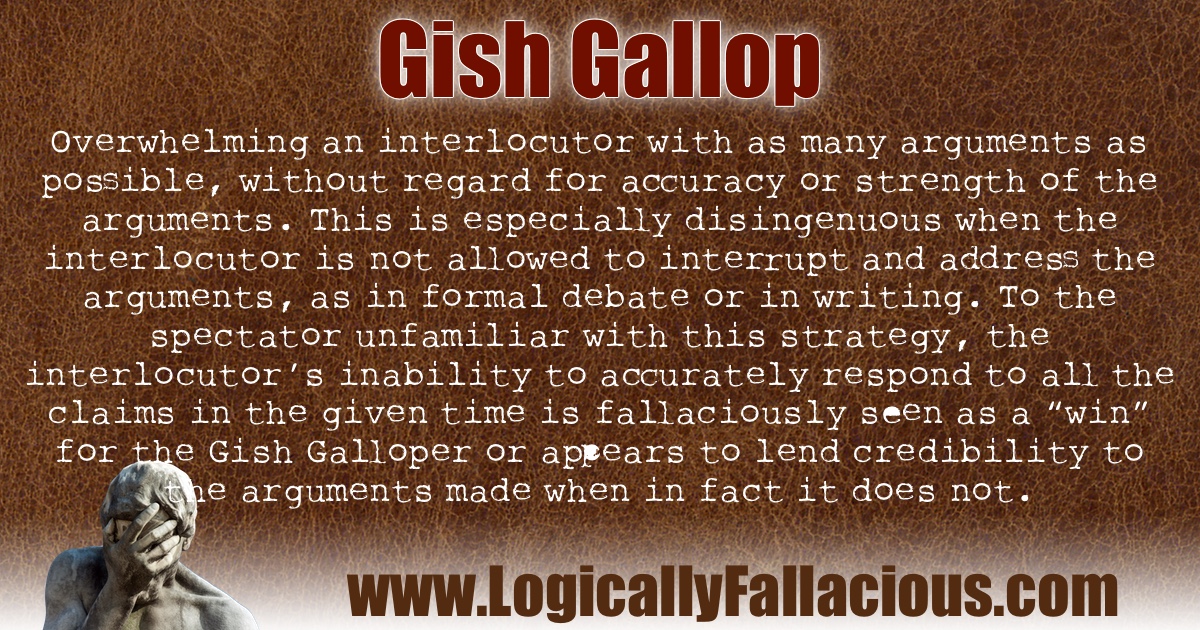Description: Overwhelming an interlocutor with as many arguments as possible, without regard for accuracy or strength of the arguments. This is especially disingenuous when the interlocutor is not allowed to interrupt and address the arguments, as in formal debate or in writing. To the spectator unfamiliar with this strategy, the interlocutor’s inability to accurately respond to all the claims in the given time is fallaciously seen as a “win” for the Gish Galloper or appears to lend credibility to the arguments made when in fact it does not.
Logical Form:
Person 1 presents weak arguments A, B, C, D, E... without Person 2 being given the opportunity to address each argument.
Example #1: The term was coined by Eugenie Scott of the National Center for Science Education in the 1990s. Dr. Scott coined the term based on the behavior of creationist Duane Gish in formal debates. Dr. Scott states:
“On the radio, I have been able to stop Gish, et al, and say, ‘Wait a minute, if X is so, then wouldn't you expect Y?’ or something similar, and show that their ‘model’ is faulty. But in a debate, the evolutionist has to shut up while the creationist Gallops along, spewing out nonsense with every paragraph.”
Example #2: In a 2012 debate between Mitt Romney and President Obama, Romney overwhelmed Obama with many arguments of questionable strength, resulting in many referring to Romney’s strategy as an example of the Gish Gallop.
Exception: The two key characteristics of the Gish Gallop are 1) the number of arguments in uninterrupted succession and 2) the lack of strength of the arguments presented. The number of arguments presented is problematic when the interlocutor doesn’t have a reasonable amount of time (or space if in writing and limited by characters) to respond. The strength of the arguments is debatable, so in the case of Romney and Obama, it can be argued that Romney was making strong arguments, in which case Romney’s crime was simply presenting too many of these arguments at once.
Fun Fact: A thousand bad arguments don’t add up to a single good argument, although many people interpret numerous bad arguments as “strong evidence” (e.g., “they can’t all be wrong” - Yes, they can all be wrong.)
